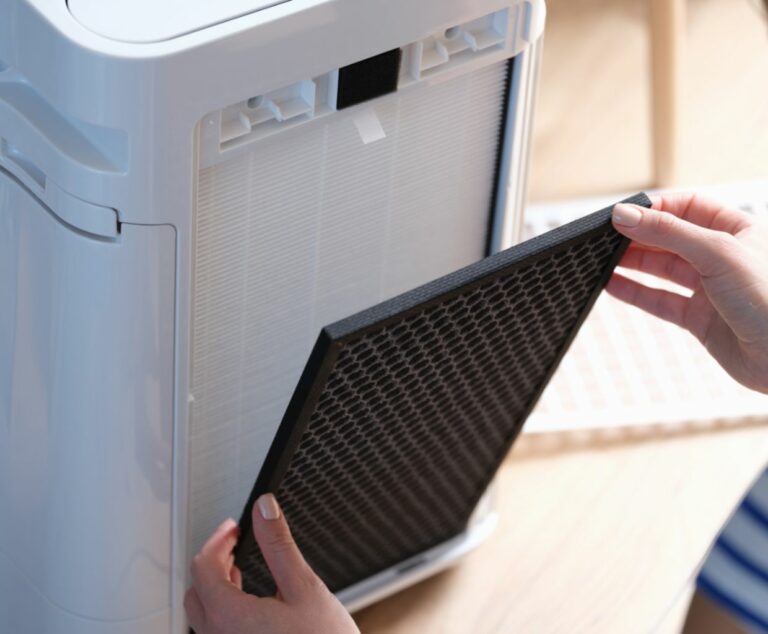Air conditioners are a great way to beat the heat but can also be a pain in the neck. Portable AC units are especially susceptible to mold and mildew buildup, which can cause your unit to break down or even start emitting odors.
Fortunately, cleaning your portable air conditioner is easy! This guide will discuss how to clean a portable air conditioner with an internal reservoir, how often you should clean it, and what type of cleaning materials will be best for your situation.
Content Summary
Pros of Portable air conditioners
Portable air conditioners are a great way to beat the heat without installing permanent AC units. They’re:
- cost-effective,
- easy to install and use,
- energy efficient
- plus, they can be moved from room to room as needed.
Portable air conditioners have an internal reservoir that captures water from the air and must be drained periodically. If you let the reservoir fill up, the excess moisture can cause damage to your unit. The best way to avoid this is by draining it yourself regularly or using a hose with a standard garden-hose attachment and draining system if you have one. It would be best if you cleaned out the reservoir when you changed its filter (about every three months).
Portable Air Conditioner Maintenance
Regular filter maintenance will help keep your portable AC unit running efficiently and effectively. It’s essential to maintain your portable AC unit regularly. Simply cleaning the filter will help keep your unit running efficiently and effectively.
What is a filter?
The filter is a mesh or fabric that traps dirt, dust, and other particles in the air as it passes through. In some cases, this filter is located inside the unit; in others, it can be accessed from outside the machine by opening an access panel or hatch on top of it.
How to Clean Your Portable Air Conditioner?
You can clean mold from the reservoir by carefully opening it and applying a mixture of vinegar and warm water. Could you rinse the reservoir well afterward so that no residue remains? You can also use a vinegar-water solution to clean any visible mold in your unit, but be careful not to let it get on plastic parts or electronics.
It would be best never to spray bleach onto or into your portable air conditioner’s filter because it will damage the HEPA filter inside. If you want to wash this part of your portable air conditioner, use mild soap and warm water instead.
When cleaning any part of your portable air conditioner other than its filters (or moldy reservoir), be sure not to let the moisture soak into any electrical components; if necessary, wait for at least 30 minutes after turning off all power before proceeding with cleaning efforts.
How Often Should You Clean a Portable AC unit?
You should clean your portable AC unit before each season and after every time you use it. This will prevent mold and mildew from building up, which can cause damage to the unit and also make it smell not good. Cleaning a portable air conditioner is easy, but check the manufacturer’s instructions first—some models have different requirements or cleaning systems than others.
To properly clean a portable AC unit:
- Remove any dust or dirt from its exterior with a damp cloth (or if you have an electric model that can be easily tipped over, remove its filter),
- Use vinegar mixed with water on any hard-to-reach areas inside the unit, such as around vents and buttons,
- Once you’ve cleaned the unit, use a dry cloth to wipe away any moisture that may have collected on its exterior. If possible, remove the unit from its location and place it where it can air out for a few hours—this will help prevent mold and mildew from forming on your AC.
Cleaning your portable air conditioner step by step
Cleaning your portable air conditioner should be part of your regular spring cleaning routine. Now that you know how to clean a portable air conditioner, here are the specific steps you’ll want to take:
- Clean the filter. Please remove it from its compartment and run it under water in your sink or shower. Then, use a brush or vacuum attachment to remove any debris that may be stuck on it. Rinse off the filter with warm water until there is no more dust, dirt, or grime left. Allow it to dry completely before replacing it in its compartment.
- Clean the reservoir tank by removing any buildup with warm water and soap; rinse thoroughly once again with clear running water so as not to leave soap residue behind, which could cause mold growth if not removed properly!
- Clean out the drain tube by disconnecting it from the unit (if possible) and empty contents into the sink disposal system OR flush down the toilet if no other option is available! Ensure all material is flushed down properly before reattaching it back onto the AC unit itself after the cleaning process has been completed successfully without any problems (if necessary).
- If unable – disconnect at first due to safety reasons instead until ready for the next step below, which involves cleaning condenser coils themselves inside the back panel area where fan blades sit right above the top edge between the bottom two panels during operation time only unless otherwise specified differently elsewhere than here within text through best practice guidelines still apply regardless whether they were followed verbatim or not due precautions taken anyway when doing anything remotely dangerous such as touching sharp objects while working around electricity sources etcetera…
Conclusion
This article has helped you better understand how to clean a portable air conditioner. The process is simple, but it’s essential to follow the steps so you don’t damage the unit or hurt yourself.
If there’s anything else you’d like us to cover in future articles, please let us know by leaving a comment below!


